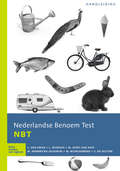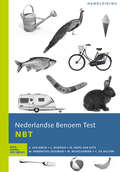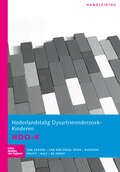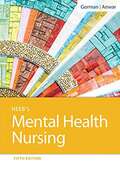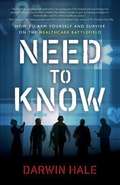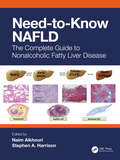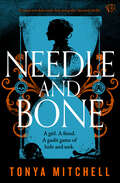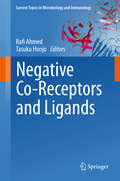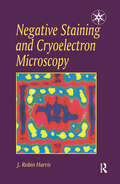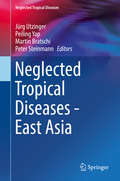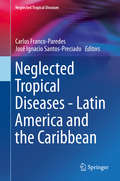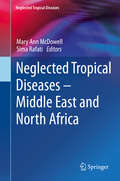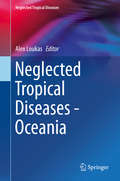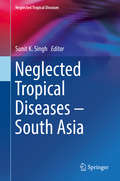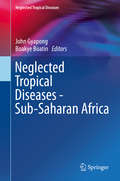- Table View
- List View
Nederlands: Burgerschap voor AG (Basiswerk AG)
by M.C. Arnold-KlaarhamerIn het beroepsleven is een goede beheersing van het Nederlands, zowel mondeling als schriftelijk, van groot belang. Het basiswerk Nederlands, Burgerschap voor AG helpt elke mbo–student om de Nederlandse taal goed onder de knie te krijgen. De volgende onderwerpen komen aan bod:· spelling, grammatica en stijl;· mondelinge en schriftelijke informatie;· verslaglegging en rapportage; · verslaglegging en rapportage;· zakelijke correspondentie;· sollicitatieprocedure;· vergaderen.Daarbij is er aandacht voor e–mailetiquette en culturele verschillen. Ook de nieuwe eisen voor leren, loopbaan en burgerschap zijn in dit boek verwerkt. De student krijgt diverse opdrachten om de taalvaardigheid te trainen. Er wordt daarbij steeds verwezen naar praktijksituaties. Zodoende kan de student de link naar het toekomstige beroep leggen.Naast de lees– en schrijfvaardigheid is er aandacht voor de luistervaardigheid. Daarom hoort bij dit boek een cd met een luistertoets.
Nederlandse Benoem Test (NBT) handleiding
by M. Hendrickx-Jessurun Lotti Dijkhuis Margriet Wijngaarden Lizet van Ewijk M. Hofs-van Kats Carlijn de HilsterDoel van de testDe Nederlandse Benoem Test (NBT) is een meetinstrument voor het vaststellen van woordvindingsstoornissen bij volwassenen met een Niet Aangeboren Hersenletsel (NAH). De NBT bestaat uit 92 eenduidige afbeeldingen in kleur, opgebouwd op basis van verwervingsleeftijd en woordfrequentie. De test geeft hierdoor ook informatie over de aard van de woordvindingsstoornis. De afbeeldingen van de NBT zijn zorgvuldig uitgezocht voor de Nederlandse setting. De selectie is gebaseerd op de meest recente wetenschappelijke inzichten op het gebied van woordvinding en op de behoeftes en voorkeur van logopedisten en clienten. De test speelt in op de behoefte aan no-nonsense afbeeldingen geschikt voor volwassenen, met items speciaal geselecteerd voor de Nederlandse taal. De test is tot stand gekomen in samenwerking met logopedisten en clienten met NAH en een afasie, om zo samen een valide, betrouwbaar en gebruiksvriendelijk instrument te creeren. Toepassing• Screening: signaleert de aanwezigheid van woordvindstoornissen• Diagnose: inzetbaar in de diagnostiek van woordvindproblemen • Behandeling: meet de voorruitgang van gegeven therapie. • Onderzoek: toegevoegde waarde voor Nederlands onderzoek: de NBT is speciaal voor de Nederlandse populatie ontwikkeld. Wat meet de NBT?De Nederlandse Benoem Test meet woordvindproblemen bij volwassenen met een Niet Aangeboren Hersenletsel (NAH). De test is opgebouwd op basis van verwervingsleeftijd (2 categorieen) en woordfrequentie (3 categorieen) en geeft zo ook informatie over de aard van de woordvindingsstoornis. De test meet het hele woordvindingstraject. Voor wie?De NBT wordt in principe afgenomen door een logopedist of klinisch linguïst, maar ook professionals uit andere disciplines met affiniteit voor afasie en taal, zoals neuropsychologen, klinisch psychologen of neurologen kunnen met de NBT werken. Toelichting van een logopedist of klinisch linguïst is dan raadzaam.Afname en scoringDe afnameduur varieert tussen de 5 en de 30 minuten, afhankelijk van de ernst van de afasie. De afbeeldingen worden visueel aangeboden. De patient benoemt de afbeelding die hij/zij ziet. NormenOm na te gaan of er op basis van de NBT een juiste diagnose kan worden gesteld (predictieve validiteit) zijn de scores van gezonden en afatici met elkaar vergeleken. In de handleiding wordt een optimale cut-off score gegeven die het verschil tussen wel/geen stoornis aangeeft. MaterialenNBT- complete set NBT- scoreformulieren
Nederlandse Benoem Test - Screening (NBT - Screening) - handleiding: NBT - screening handleiding
by Lotti Dijkhuis Lizet van Ewijk Eline Alons Piet van TuijlDe Nederlandse Benoem Test - screening (NBT - screening) is een screeningsinstrument voor het vaststellen van woordvindstoornissen bij volwassenen met afasie.De NBT - screening is ontwikkeld voor professionals die snel en eenvoudig willen screenen op de aanwezigheid van woordvindstoornissen. Denk aan logopedisten in de acute fase, (neuro)psychologen en/of revalidatieartsen. De NBT - screening bevat verschillende sets, waarin het aantal afbeeldingen varieert tussen de 5 en de 10. Elke versie heeft een eigen betrouwbaarheid en afkapwaarde. Aan de professional de keuze om de set te kiezen die het beste binnen de werksetting past.De items in de NBT - screening zijn zorgvuldig gekozen, speciaal voor de Nederlandse taal. De no-nonsense afbeeldingen zijn herkenbaar en geschikt voor de volwassen doelgroep. De NBT - screening is tot stand gekomen in samenwerking met logopedisten. Het is een valide en betrouwbaar screeningsinstrument, en gebruiksvriendelijk voor zowel de professional als de cliënt met afasie.
Nederlandse Benoem Test NBT: Handleiding
by L. Van Ewijk L. Dijkhuis M. Hofs-van Kats M. Hendrickx-Jessurun M. Wijngaarden C. De HilsterDe Nederlandse Benoem Test (NBT) is een meetinstrument voor het vaststellen van woordvindingsstoornissen bij volwassenen met Niet Aangeboren Hersenletsel (NAH). De NBT bestaat uit 92 afbeeldingen in kleur (die visueel worden aangeboden), opgebouwd op basis van verwervingsleeftijd en woordfrequentie. De test geeft hierdoor ook informatie over de aard van de woordvindingsstoornis. De NBT bevat eenduidige afbeeldingen, die zorgvuldig zijn uitgezocht voor de Nederlandse setting. De selectie van de afbeeldingen is gebaseerd op de meest recente wetenschappelijke inzichten op het gebied van woordvinding, én op de behoeftes en voorkeur van logopedisten en cliënten. De test speelt in op de behoefte aan een benoemtest met no-nonsense afbeeldingen, geschikt voor volwassenen, met items geselecteerd voor de Nederlandse taal. Geen pretzel of juk, maar herkenbare items als hagelslag en zandbak. De test is tot stand gekomen in samenwerking met logopedisten en cliënten met NAH en een afasie, om zo samen een valide, betrouwbaar én gebruiksvriendelijk instrument te creëren.
Nederlandstalig Dysartrieonderzoek-Kinderen NDO-K: Handleiding
by Van Gerven van den Engel-Hoek Ruessink Knuijt Kalf De SwartDoel van de testHet NDO-K is een instrument waarmee de diagnose 'dysartrie' bij kinderen gesteld kan worden. Daarnaast kan met het instrument het type dysartrie en de ernst ervan worden vastgesteld. In Nederland was tot op heden geen dysartrieonderzoek voor kinderen beschikbaar. Met het verschijnen van het NDO-K is hierin verandering gekomen. Het NDO-K is een gestandaardiseerd, valide en betrouwbaar instrument dat kan bijdragen aan goede basis voor logopedische therapie. Het type en de ernst van de dysartrie worden in het NDO-K onderzocht met behulp van gestandaardiseerde spreekopdrachten. Alle aspecten van de spraak, te weten adem, fonatie, articulatie, nasale resonantie en prosodie worden met deze opdrachten in kaart gebracht. Het NDO-K is bedoeld voor kinderen bij wie een vermoeden bestaat van aanwezigheid van een dysartrie. Het instrument is geschikt om af te nemen in de acute fase, de revalidatiefase en de chronische fase.Toepassing•Diagnostiek: stelt de diagnose dysartrie en bepaalt het type en de ernst van de dysartrie.•Differentiaaldiagnose: het NDO-K onderscheidt dysartrie van andere spraakstoornissen.•Behandeling: vormt de basis voor een passend therapieplan.•Wetenschappelijk onderzoek: de maximum performancetaken en de leesteksten zijn geschikt voor het verzamelen van genormeerde data. Onderzoek heeft laten zien dat de ernstscore betrouwbaar vastgesteld kan worden. Wat onderzoekt het NDO-K?Het NDO-K onderzoekt alle aspecten van de spraak met behulp van 6 spreektaken, te weten:•1. spontane spraak•2. lezen van een standaard tekst of naspreektaken•3. diadochokinese•4. glijtonen•5. roepen•6. maximale aanhoudingsduurVoor wie?Het NDO-K kan door logopedisten afgenomen worden. Scoring en interpretatie kan betrouwbaar gedaan worden door logopedisten die ervaren en/of getraind zijn in het luisteren naar dysartrische spraak. Hiervoor worden ook NDO-K workshops gegeven door het Radboudumc, afdeling Revalidatie logopedie kinderen. Zie https://www.radboudumc.nl/afdelingen/revalidatie/paramedische-disciplines/logopedie/volwassenen-en-kinderen/logopedie-kinderen/scholingAfname en scoringDe afname gebeurt in een vaste volgorde en duurt 20 tot 30 minuten. De afname wordt bij voorkeur op video opgenomen. Scoring gebeurt tijdens en na de afname, zo nodig wordt voor de scoring de video-opname terug gekeken. Aan de hand hiervan kan een inschatting gemaakt worden van de mate waarin de prestatie afwijkt (onmogelijk, duidelijk afwijkend, licht afwijkend). Voor de maximale prestatietaken zijn referentiewaarden toegevoegd.Materialen• NDO-K complete set (handleiding, formulieren, therapiemateriaal)• NDO-K scoreformulieren (set van 25) • NDO-K workshop (via Radboudumc)
Neeb's Mental Health Nursing
by Linda M. Gorman Robynn AnwarHere’s the must-know information LPN/LVN students need to care for patients with mental health disorders where they’ll encounter them - in general patient care settings. <p><p> An easy-to-read, conversational writing style shows you how to recognize and respond to the most important mental health issues. You’ll also explore important communication techniques, ethical and legal issues, and alternative and complementary treatments. Coverage of nursing interventions, basic psychiatric nursing skills, and psychopharmacology prepares you for the NCLEX-PN® exam and clinical practice.
Need to Know: How to Arm Yourself and Survive on the Healthcare Battlefield
by Darwin HaleIllness, disease, and aging aren't the only things attacking your wellness. The US healthcare system has failed to evolve like other industries, remaining fragmented and inefficient, unable to keep up with the changing needs of citizens, particularly those of Medicare age and veterans. But there is hope. Eventually, you or a loved one will be drafted onto the healthcare battlefield--and the best time to prepare is now. <P><P>In Need to Know, Darwin Hale, a decorated retired military officer with more than twenty years in the healthcare arena, presents practical and objective strategies for managing the system's flaws based on military lessons learned. These solutions include how to <ul> <li>Navigate a system that can cure or kill you </li> <li>Use wellness to fight disease </li> <li>Prepare for the future of personalized medicine </li> <li>Arm yourself with a battle plan </li> </ul> <P><P>You don't have to fight alone. Need to Know cuts through the red tape so you can get the care you deserve.
Need-to-Know NAFLD: The Complete Guide to Nonalcoholic Fatty Liver Disease
by Naim Alkhouri Stephen A. HarrisonNonalcoholic fatty liver disease (NAFLD) is the hepatic manifestation of the obesity and metabolic syndrome epidemics, which this up-to-date book deals with comprehensively. The contents outline disease mechanisms, diagnostic tests, management, varying manifestations, and special populations. It covers the mechanistic pathways that contribute to NAFLD development, including the role of genetic variants and the gut microbiome. It elaborates on noninvasive diagnostic tests to screen for NAFLD, determine its severity, and monitor response to lifestyle intervention and pharmacologic treatment. This book helps clinicians diagnose and treat this common and potentially deadly disease. Key Features: Reviews current drugs in development and provides practical advice to clinicians on the diagnosis and management of fatty liver. Proves attractive to primary care providers who are on the front line of managing patients with NAFLD, to gastroenterologists and hepatologists who would benefit from updated data on how to risk-stratify patients and identify those who will be eligible for pharmacologic treatment, and other specialists such as cardiologists, endocrinologists, and nephrologists who will find this book to be a useful reference on the extrahepatic manifestations of NAFLD. Focuses on extrahepatic manifestations and new insights on the mechanistic drivers of the disease.
Needed: Full-Time Father
by Carol MarinelliHis newfound familyWhen the grand opening of Heatherton E.R. doesn't quite go as planned, nurse manager Madison Walsh must rely on the new consultant, Guy Boyd, to save the day. This requires her to put her trust in someone else— something she hasn't done for a long, long time.Soon trusting turns to loving, but Madison has her daughter's happiness to consider. Guy is a wild card. If she lets him into her life, is there any guarantee he will stay? Guy must show Madison that he can be the husband and father her family needs full-time.
Needle and Bone
by Tonya MitchellShe saw a murder. Now the ghost won't let her forget—and the killer won't let her live. Philadelphia, 1841. Seventeen-year-old Annis Hargrave is running from a nightmare. She and her brother have fled New York, burdened by secrets, grief, and the cursed blue pearl that may have brought death in its wake. But the past refuses to stay buried. Offered work as a medical illustrator by the enigmatic Dr. Thomas Mütter, Annis enters a world of surgical marvels and grotesque beauty. There, amid bottled organs and broken bodies, she begins to rebuild her shattered life—until the ghost of the girl she couldn&’t save begins to appear. And the man who killed her isn&’t far behind. As bodies begin to fall and her brother is taken, Annis must descend into the eerie depths of Mütter&’s surgical amphitheater—The Pit—for a final confrontation with the monster who haunts her…Darkly atmospheric and emotionally gripping, Needle and Bone is a gothic tale of guilt, vengeance, and a girl&’s fight to reclaim her soul from the shadows.
Needles, Herbs, Gods, and Ghosts: China, Healing, and the West to 1848
by Linda L. BarnesWhen did the West discover Chinese healing traditions? Most people might point to the "rediscovery" of Chinese acupuncture in the 1970s. In Needles, Herbs, Gods, and Ghosts, Linda Barnes leads us back, instead, to the thirteenth century to uncover the story of the West's earliest known encounters with Chinese understandings of illness and healing. As Westerners struggled to understand new peoples unfamiliar to them, how did they make sense of equally unfamiliar concepts and practices of healing? Barnes traces this story through the mid-nineteenth century, in both Europe and, eventually, the United States. She has unearthed numerous examples of Western missionaries, merchants, diplomats, and physicians in China, Europe, and America encountering and interpreting both Chinese people and their healing practices, and sometimes adopting their own versions of these practices. A medical anthropologist with a degree in comparative religion, Barnes illuminates the way constructions of medicine, religion, race, and the body informed Westerners' understanding of the Chinese and their healing traditions.
Needs of Children and Young People Living with Complex Mental Health Difficulties: Why it’s Everyone’s Business
by Vanessa Heaslip Gemma TrainorThis book highlights how it is increasingly important that nurses and other health and social care professionals working with or caring for children and young people (CYP) can contribute to the care and support these vulnerable individuals need. Given the limited specialist mental health services available for CYP, this book helps to recognise when referral to specialist services is required. It is aimed at providing nurses, other health and social care professionals with a comprehensive understanding of some of the complex mental health issues faced by young people today and to provide them with confidence in how to interact helpfully with them. While covering a range of complex mental health issues (such as self-harm, eating disorders, and psychosis) this book also explores wider factors that can influence poor mental health (such as being Looked After, having a disability, drugs and alcohol, and social media). Alongside these, it explores some of the wider systems and processes that can provide practical guidance to practitioners (having a Trauma-informed approach, awareness of risk management, and safeguarding). Lastly, the book recognises how overwhelming it can be for practitioners working in this field and explores how they can use reflective practice and self-care in the development of a therapeutic relationship that enables them to interact positively and non-judgementally with young people with complex mental health issues. Examples of good practice are provided throughout the book by using case scenarios and tips from young people with lived experience.This book will prove to be an invaluable guide to assist nurses, teachers, social workers, paramedics, health care assistants and police force in giving help and support to CYP.
Negative Co-Receptors and Ligands
by Tasuku Honjo Rafi AhmedAdaptive immune responses serve as a key defense mechanism for the control of infections in vertebrates. Immune responses must be of sufficient strength to contain invading pathogens, antigen specific responses require regulatory mechanisms to ensure termination or downmodulation to avoid excessive damage to the host tissue. For both branches of the adaptive immune system, regulatory molecules i.e. coreceptors and ligands have been identified that control the signaling cascades initiated by engagement of the T cell and B cell antigen receptors. This book describes biological functions as well as molecular mechanisms of these molecules.
Negative Staining and Cryoelectron Microscopy: The Thin Film Techniques
by 0 J.R. Harris,Since the start of biological studies using the transmission electron microscope scientists have sought to develop procedures for the preparation and investigation of the thinly spread specimens of biological particulates. Negative Staining and Cryoelect
Neglected Diseases in Monkeys: From the Monkey-Human Interface to One Health
by Lisa Jones-Engel Sascha KnaufThis book offers a valuable resource, reviewing the current state of knowledge concerning the pathology and epidemiology of infectious diseases in both captive and wild monkeys. The One Health concept forms the framework of all chapters. The multidisciplinary team of authors addresses neglected diseases caused by the three major pathogen groups - bacteria, viruses, and parasites. Moreover, the volume discusses key virulence factors such as the evolution of antibiotic resistance, and the ecological drivers of and human influence on pathogen transmission. Demonstrating how researchers working on monkeys diseases are increasingly thinking outside the box, this volume is an essential reference guide to the field of One Health and will serve as an asset for stakeholders in conservation, healthcare and research organizations that face the challenge of moving beyond classical human oriented approaches to health.
Neglected No More: The Urgent Need to Improve the Lives of Canada's Elders in the Wake of a Pandemic
by Andre PicardIt took the coronavirus pandemic to open our eyes to the deplorable state of so many of the nation's long-term care homes: the inhumane conditions, overworked and underpaid staff, and lack of oversight. In this timely new book, esteemed health reporter André Picard reveals the full extent of the crisis in eldercare, and offers an urgently needed prescription to fix a broken system.When COVID-19 spread through seniors' residences across Canada, the impact was horrific. Along with widespread illness and a devastating death toll, the situation exposed a decades-old crisis: the shocking systemic neglect towards our elders.Called in to provide emergency care in some of the hardest-hit facilities in Ontario and Quebec, the military issued damning reports of what they encountered. And yet, the failings that were exposed--unappetizing meals, infrequent baths, overmedication, physical abuse and inadequate personal care--have persisted for years in these institutions. In Neglected No More, André Picard takes a hard look at how we came to embrace mass institutionalization, and lays out what can and must be done to improve the state of care for our elders, a highly vulnerable population with complex needs and little ability to advocate for themselves. Picard shows that the entire eldercare system--fragmented, underfunded and unsupported--is long overdue for a fundamental rethink. We need to find ways to ensure seniors can age gracefully in the community for longer, with supportive home care and respite for family caregivers, and ensure that long-term care homes are not warehouses of isolation and neglect. Our elders deserve nothing less.
Neglected Tropical Diseases - East Asia (Neglected Tropical Diseases)
by Jürg Utzinger Peiling Yap Martin Bratschi Peter SteinmannNeglected tropical diseases (NTDs) are a group of diseases frequently found in impoverished communities in tropical and sub-tropical countries. The risk for many of the NTDs is high in both deprived urban and rural areas of East Asia. Adapted to the endemic settings and characteristics of the diseases, a range of tools and strategies are currently being rolled out for the large-scale control of many NTDs. Both vector control measures and community sensitization programmes have for example been used to control dengue in urbanized settings. Challenges posed by yaws and lymphatic filariasis are being addressed by mass drug administration, while rabies requires the involvement of the veterinary public health sector for disease control. For leprosy, an elimination target has been defined; however, achieving this goal remains a considerable challenge. Food-borne trematodiases, on the other hand, are emerging and require a deeper understanding of its burden in East Asia and how these diseases can be tackled in a cost-effective manner. Finally, factors, such as an increase of non-communicable diseases due to changing lifestyles which accompany economic growth, the spreading HIV epidemic as well as climate change and the occurrence of natural disasters can potentially affect the epidemiology and control of NTDs. This volume discusses the mentioned topics in detail with contributions by experts in the respective research areas from different working environments.
Neglected Tropical Diseases - Europe and Central Asia (Neglected Tropical Diseases)
by Jürg Utzinger Peter SteinmannThis volume of the Neglected Tropical Diseases (NTD) series covers the most prevalent NTDs in Europe and Central Asia. This book discusses in detail the pathology, diagnostics and control approaches of the most important neglected pathogens occurring in these geographical regions. Each chapter focuses on one specific disease or group of related diseases, and provides the reader with in-depth insights into the topic. This volume addresses researchers in Microbiology and Biomedicine as well as clinicians and public health officials working in affected regions.
Neglected Tropical Diseases - Latin America and the Caribbean
by Carlos Franco-Paredes José Ignacio Santos-PreciadoThis book addresses the major neglected tropical diseases (NTDs) - based on their prevalence and the years of healthy life lost to disability - in Latin American and Caribbean countries. These include Chagas disease, leishmaniasis, hookworm infection, and other soil-transmitted helminth infections, followed by dengue, schistosomiasis, leishmaniasis, leprosy, cysticercosis, bartonellosis, Plasmodium vivax malaria, and onchocerciasis. Topics like disease burden, major manifestations and approaches to the control and elimination of NTDs in Latin America and the Caribbean are discussed in detail. As such, the book will be of general interest to basic researchers and clinicians engaged in infectious disease, tropical medicine, and parasitology, and a must-have for scientists specialized in the characteristics of this region of the world.
Neglected Tropical Diseases - Middle East and North Africa
by Mary Ann Mcdowell Sima RafatiThe Middle East and North Africa (MENA) is highly endemic for several neglected tropical diseases (NTDs), including viral, bacterial, protozoan and helminth infections. This new volume covers the most prevalent NTDs found in about 22 MENA countries emphasizing the disease burden, clinical manifestations and control approaches. Each individual chapter deals with one specific disease and is written by a group of experts on that topic.
Neglected Tropical Diseases - North America (Neglected Tropical Diseases)
by Jill E. WeatherheadThis volume of the Neglected Tropical Diseases (NTD) series covers the most prevalent NTDs in North America. This book discusses in detail pathology, diagnostics and control approaches of selected NTDs in the sub-tropical regions of the United States of America. There are disproportionate numbers of children and adults living in poverty within the United States that are at risk of infections caused by helminths, protozoa, viruses and bacteria which commonly lead to chronic, debilitating and stigmatizing diseases. Each chapter focuses on one specific disease or series of related diseases, and provides in-depth insights into the topic.
Neglected Tropical Diseases - Oceania
by Alex LoukasThis volume of the Neglected Tropical Diseases (NTD) series covers the most prevalent NTDs in Oceania. This book will discuss in detail pathology, diagnostics and control approaches of selected NTDs in the geografic region. A large part of Oceania's population lives in poverty and therefore is at high risk for certain parasitic diseases, such as hookworm infection, lymphatic filariasis, strongyloidiasis or scabies. In addition bacterial infections such as dengue and new emerging viruses are of importance as major health risks for people living and traveling in this area. Each chapter focuses on one specific disease or series of related diseases, and provides in-depth insights into the topic.
Neglected Tropical Diseases - South Asia (Neglected Tropical Diseases Ser.)
by Sunit K. SinghThis book covers all aspects of Neglected Tropical Diseases in the region of South Asia. NTDs constitute a significant part of the total disease burden in this geographic area, including soil borne helminth infections, vector borne viral infections, protozoan infections and a few bacterial infections. The current volume covers the most common neglected viral, bacterial and protozoan infections. On top of that, the last part of the volume is dedicated to the management of neglected tropical diseases.
Neglected Tropical Diseases - Sub-Saharan Africa
by John Gyapong Boakye BoatinThis book provides an overview on the major neglected tropical diseases (NTDs) occurring in Sub-Saharan Africa, such as Leishmaniasis, Buruli Ulcer and Schistosomiasis. In well-structured chapters epidemiology and biology of these parasitic diseases will be discussed in detail. Further, diagnostics and therapeutic approaches as well as prevention strategies will be reviewed. The book will be of interest to basic researchers and clinicians engaged in infectious disease, tropical medicine, and parasitology, and a must-have for scientists specialized in the characteristics of the Sub-Saharan region.
Neglected Tropical Diseases - Sub-Saharan Africa (Neglected Tropical Diseases)
by John O. Gyapong Boakye A. BoatinThis fully updated and expanded second edition provides an overview of the major neglected tropical diseases (NTDs) occurring in sub-Saharan Africa, such as leishmaniasis, buruli ulcer, schistosomiasis and many more. The well-structured chapters explore in detail the epidemiology and biology of these parasitic diseases. Diagnostic and therapeutic approaches as well as prevention strategies are also reviewed. Furthermore, the book discusses the burden of disease in sub-Saharan Africa, taking into account the social and economic impact on the region and its health system.The book is aimed at researchers, advanced students and clinicians working on infectious diseases, tropical medicine and parasitology, and is a must-read for scientists specialising in the particularities of the sub-Saharan region.

